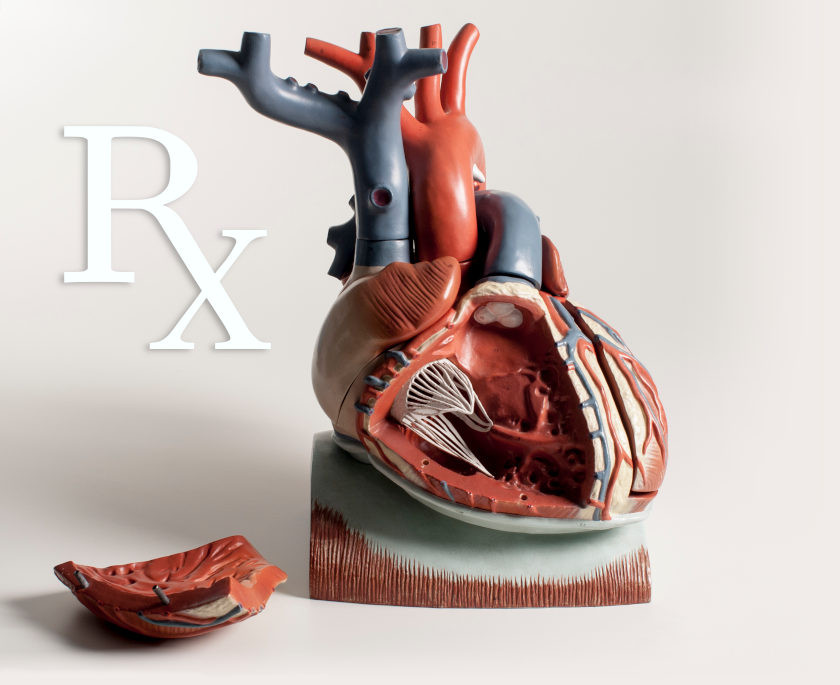Calcium-Channel Blockers (CCBs)
General Pharmacology
Calcium-Channel Blockers
Cardiac effects
- Decrease contractility
(negative inotropy) - Decrease heart rate
(negative chronotropy) - Decrease conduction velocity
(negative dromotropy)
Vascular effects
- Smooth muscle relaxation
(vasodilation)
Currently, approved calcium-channel blockers (CCBs) bind to L-type calcium channels on vascular smooth muscle, cardiac myocytes, and cardiac nodal tissue (sinoatrial and atrioventricular nodes). These channels regulate the influx of calcium into cells. In vascular smooth muscle and cardiac myocytes, calcium influx stimulates muscle contraction; calcium influx in nodal tissue plays an important role in pacemaker currents and in phase 0 of action potentials. Therefore, by blocking calcium entry into the cell, CCBs cause vascular smooth muscle relaxation (vasodilation), decreased myocardial force generation (negative inotropy; decreased contractility), decreased heart rate (negative chronotropy), and decreased conduction velocity (negative dromotropy), particularly at the atrioventricular node.
Therapeutic Indications
Hypertension
By causing vascular smooth muscle relaxation, CCBs decrease systemic vascular resistance, which lowers arterial blood pressure. These drugs primarily affect arterial resistance vessels, with only minimal effects on venous capacitance vessels. Some CCBs also reduce heart rate and contractility, which can lead to a fall in cardiac output and lower arterial pressure.
Angina
The anti-anginal effects of CCBs are derived from their vasodilator and cardiodepressant actions. Systemic vasodilation reduces arterial pressure, which reduces ventricular afterload (wall stress) thereby decreasing oxygen demand by the heart. The more cardioselective CCBs (verapamil and diltiazem) decrease heart rate and contractility, which leads to a reduction in myocardial oxygen demand. CCBs can also dilate coronary arteries and prevent or reverse coronary vasospasm (as occurs in Printzmetal's variant angina), increasing oxygen supply to the myocardium.
Arrhythmias
The antiarrhythmic properties (Class IV antiarrhythmics) of CCBs are related to their ability to suppress firing of aberrant pacemaker sites within the heart and their ability to decrease conduction velocity and prolong repolarization, especially at the atrioventricular node. This latter action at the atrioventricular node helps to block reentry mechanisms, which can cause supraventricular tachycardia.
Different Classes of Calcium-Channel Blockers
There are three chemical classes of CCBs. They differ not only in their basic chemical structure, but also in their relative selectivity for cardiac versus vascular L-type calcium channels. The most smooth muscle selective class of CCBs are the dihydropyridines. Because of their high vascular selectivity, these drugs are primarily used to reduce systemic vascular resistance and arterial pressure, and therefore are used to treat hypertension. Extended release formulations or long-acting compounds are used to treat angina and are particularly effective for vasospastic angina; however, their powerful systemic vasodilator and pressure lowering effects can lead to baroreflex cardiac stimulation (tachycardia and increased inotropy), which can offset the beneficial effects of afterload reduction on myocardial oxygen demand. Note that dihydropyridines are easy to recognize because the drug name ends in “pine.”
Dihydropyridines include the following specific drugs that are approved in the USA:
- amlodipine
- felodipine
- isradipine
- nicardipine
- nifedipine
- nimodipine (only used for subarachnoid hemorrhage)
- nitrendipine
Non-dihydropyridines, of which there are only two currently used clinically, comprise the other two classes of CCBs. Verapamil (phenylalkylamine class), is relatively selective for the myocardium, and is less effective as a systemic vasodilator drug. This drug has an important role in treating angina (by reducing myocardial oxygen demand and reversing coronary vasospasm) and arrhythmias. Diltiazem (benzothiazepine class) is intermediate between verapamil and dihydropyridines in its selectivity for vascular calcium channels. By having both cardiac depressant and vasodilator actions, diltiazem can reduce arterial pressure without producing as much reflex cardiac stimulation as dihydropyridines.
Side Effects and Contraindications
Dihydropyridine CCBs can cause flushing, headache, excessive hypotension, peripheral edema and reflex tachycardia. Baroreceptor reflex activation of sympathetic nerves and lack of significant, direct negative cardiac effects can make dihydropyridines a less desirable choice for stable angina than diltiazem, verapamil or beta-blockers. Long-acting dihydropyridines (e.g., extended release nifedipine, amlodipine) are safer antihypertensive drugs, in part, because of reduced reflex responses. This characteristic also makes them more suitable for angina than short-acting dihydropyridines.
The cardiac selective, non-dihydropyridine CCBs can cause excessive bradycardia, constipation, impaired electrical conduction (e.g., atrioventricular nodal block), and depressed cardiac contractility. Therefore, patients having pre-existent bradycardia, conduction defects, or heart failure caused by systolic dysfunction (HFrEF) should not be given CCBs, especially the cardiac selective, non-dihydropyridines. CCBs, especially non-dihydropyridines, should not be administered to patients being treated with a beta-blocker because beta-blockers also depress cardiac electrical and mechanical activity and therefore the addition of a CCB augments the effects of beta-blockade.
Revised 11/29/2023

 Cardiovascular Physiology Concepts, 3rd edition textbook, Published by Wolters Kluwer (2021)
Cardiovascular Physiology Concepts, 3rd edition textbook, Published by Wolters Kluwer (2021) Normal and Abnormal Blood Pressure, published by Richard E. Klabunde (2013)
Normal and Abnormal Blood Pressure, published by Richard E. Klabunde (2013)